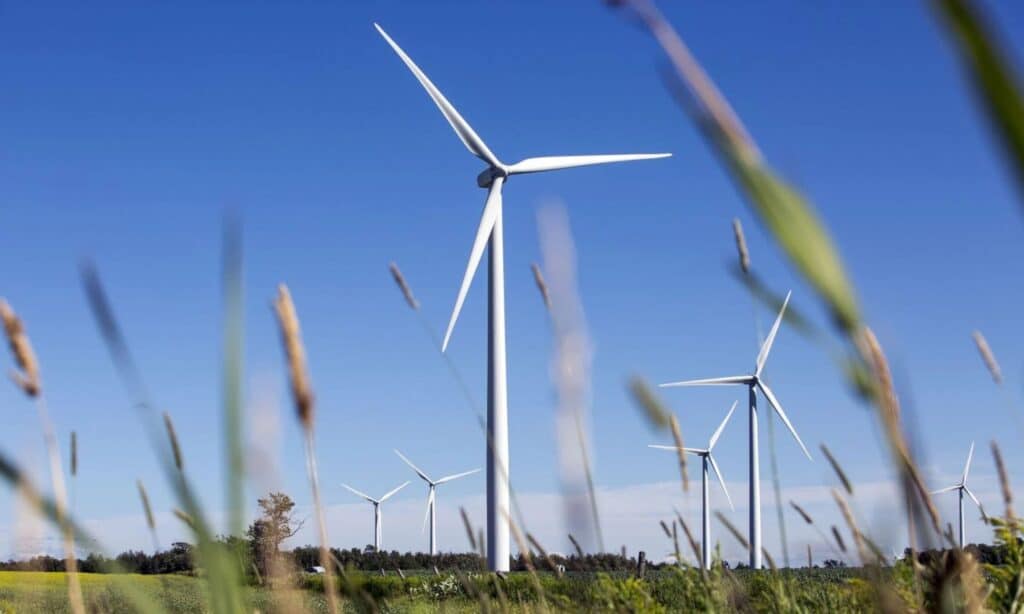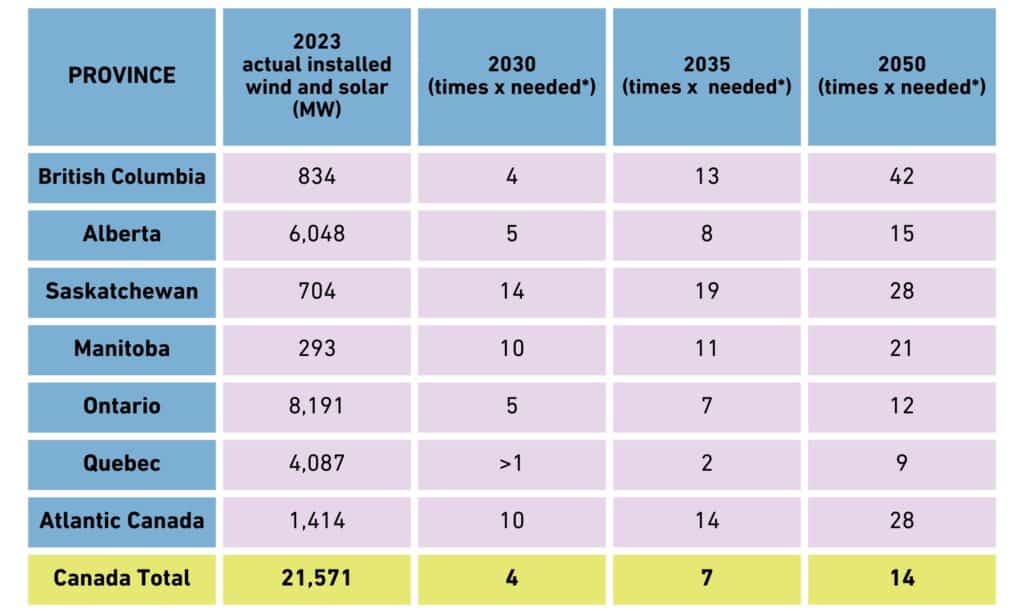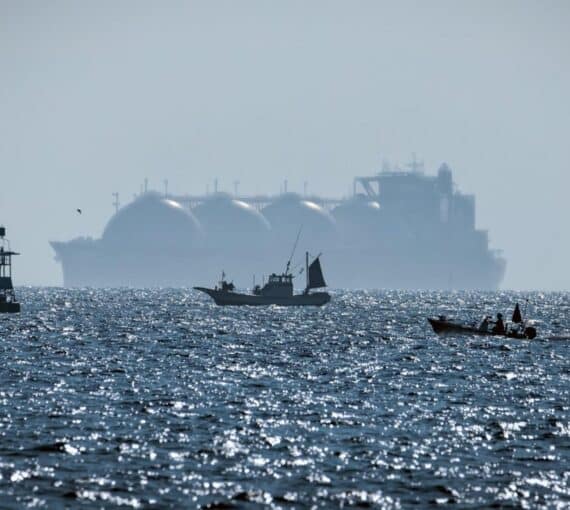
Canada is being called on to triple renewable energy by 2030. Yet Canada will actually need seven times as much renewable capacity by 2035 as it has now to meet climate goals.
Canada’s electricity system is about to embark on a journey of transformative change. Amid domestic and international calls for Canada to reach 100 per cent affordable, reliable, clean electricity by 2035, it’s a good time to assess if we’re on course to meet our goals.
Modelling studies agree that Canada will need to double or even triple our electricity system in the coming decades. Those studies also agree that the vast majority of new growth in electricity capacity will come from what are now the cheapest forms of electricity in history: wind and solar.
Globally, wind and solar have contributed more than 75 per cent of new electricity capacity over the past three years. In 2024, wind, solar and energy storage are projected to make up more than two-thirds of new electricity capacity here in Canada. The trend is undeniable at home and around the world, even as the fossil fuel lobby spends millions fighting clean electricity policies.
Amid domestic and international calls for Canada to reach 100 per cent affordable, reliable, clean electricity by 2035, it’s a good time to assess if we’re on course to meet our goals.
During the COP28 climate summit in Dubai, Canada was among 125 countries to commit to tripling global renewable electricity capacity by 2030. Yet Canada is significantly behind the pace and scale of renewable electricity additions needed to achieve our domestic and international commitments.
A threefold increase in renewables over the next six years sounds like a lot, but in fact, throughout Canada and in most provinces, far more is needed, according to modelling from the David Suzuki Foundation’s academic partners in 2022, the Canadian Renewable Energy Association’s “2050 Vision” report and similar modelling in Canada.
All provinces will need to significantly ramp up renewables to achieve 100 per cent affordable, reliable, zero-emission electricity by 2035, a goal shared among all G7 nations and being developed as a federal policy in the form of clean electricity regulations.
Going far beyond tripling renewables, Canada will need seven times as much renewable capacity by 2035 as it has now, and a 14-fold increase by 2050. Within that, each province has different needs, pathways and starting places. Those provinces that may need the steepest increase before 2035 include Saskatchewan, Atlantic Canada, British Columbia and Manitoba, while all provinces must see significant growth in renewables by 2035 and 2050.

Table: A chart showing the existing amount of renewable electricity capacity in each province, and the scale of increase needed in 2030, 2035 and 2050 for pathways that achieve net-zero emissions electricity in 2035.
*Data from: Canadian Renewable Energy Association (2022) and the David Suzuki Foundation (2022)
Ramping up renewable energy at this scope and scale will bring significant benefits but will also affect landscapes and communities. It’s essential that communities are involved in deciding where projects are located and how community benefits are distributed.
Already, the transition to renewable energy is being led by Indigenous communities, with more than 200 medium to large renewable energy projects with Indigenous involvement. There are many stories of communities at the forefront of this transition that are leading the way to a just energy future, but more planning is needed to ensure benefits flow to communities. Released in 2023, Sacred Earth Solar’s “Just Transition Guide” cautions that “it is essential that we are critical and aware of the impacts of clean energy so we do not replicate the same system of harms that have been perpetuated from the previous energy era.”
Sacred Earth Solar’s “Just Transition Guide” cautions that “it is essential that we are critical and aware of the impacts of clean energy so we do not replicate the same system of harms that have been perpetuated from the previous energy era.”
New clean electricity regulations with a goal of 100 per cent zero-emissions electricity by 2035 are expected to be finalized this year in Canada. Strong regulations without loopholes for more fossil fuel development will be essential to delivering on our renewable potential. Clearly, moves like the recent moratorium on renewable electricity in Alberta are obstacles to achieving the needed build-out of low-cost renewables. Planning and budgets need to catch up to the reality of the challenge (and opportunity) that lies in massive renewable energy growth in Canada and around the world. Removing barriers to training for clean energy jobs will be essential to delivering on our pathway to renewables.
Along with energy-efficiency advancements, renewables will bring more affordable, stable energy systems, hundreds of thousands of good jobs and the opportunity for communities and Indigenous nations to benefit directly. But for this transition to happen smoothly, we have to start planning for it. We have to hold firm against the push to expand fossil fuels and get on with the essential job of speeding up the transition to clean energy.
This article was originally published as in The Star.
SAY YES TO AFFORDABLE, SECURE, RENEWABLE POWER BY 2035
Related projects
Always grounded in sound evidence, the David Suzuki Foundation empowers people to take action in their communities on the environmental challenges we collectively face.



